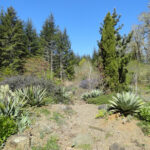Coming out at 17, fueled by cheap drinks at a house party, was both a liberation and a stumble into the unknown. The words, confessing my truth to a friend at a bus stop, felt like they physically landed on the street, tangible and irreversible. That moment, shared with a friend and punctuated by a furtive encounter later that night, marked the beginning of my queer journey. Like many in the LGBTQ+ community, this personal revelation unfolded against a backdrop of youthful confusion and exploration.
Most queer individuals carry their own ‘coming out story’ – a unique narrative woven into the experience of embracing their true selves. These stories vary wildly: some are grand pronouncements in school hallways, others are quiet acknowledgements in adulthood. They happen in diverse settings – tents, churches, dinner tables, even unexpectedly somber occasions. The methods are equally varied, from heartfelt letters to hesitant conversations, and sometimes, unspoken understandings. Yet, beneath the surface of each unique coming out tale, a common thread emerges: a sense of isolation.
The Queer Experience: Navigating Isolation and Finding Connection
The journey of exploring and accepting one’s queerness can be profoundly isolating. Indeed, queerness itself, in a world often structured around heteronormative expectations, can feel inherently lonely. The initial coming out, often met with mixed reactions, can set a pattern for years to come – a continuous process of re-explaining and re-affirming identity in spaces not always designed for us. Especially in youth, queer identity often develops in hushed moments, a seed germinating in the hidden corners of the mind, craving space and understanding.
It was during this formative period, two years after my own tentative steps into queerness, that Robyn released Body Talk pt. 1, featuring the seminal single, “Dancing On My Own.” This album, at its core, explored themes of loneliness and isolation, resonating deeply with the queer experience. In a 2010 interview with Pitchfork, Robyn herself noted, “The whole album is about being lonely, but I think it’s interesting to put that idea into a club where a lot of people are crammed into a small room.” Reflecting on “Dancing On My Own,” she described observing people in clubs during her tours, noting that the image of “dancing on my own” became “such a beautiful picture” of this shared, yet individual, experience of loneliness.
“Dancing On My Own”: A Queer Anthem is Born
By the time I first heard “Dancing On My Own,” I had navigated several cities, my youthful explorations continuing in a similar vein to that first house party encounter. Like many young queer men, I sought connection, often through fleeting encounters, yearning for a closeness that felt just out of reach. Waves of unrequited affection and the weight of societal expectations left me feeling adrift.
Then came the summer of 2010, intensely hot, with my small Bristol flat overflowing with post-festival revelers. As the night deepened, the music shifted erratically, a chaotic mix until a sound emerged that was completely new to me.
It began with a tremor, a pulsating synth that mirrored a racing heartbeat, driving the 4 minutes and 49 seconds of Robyn’s “Dancing On My Own.” This sonic heartbeat captured an angst that resonated deeply, finally fading into an ethereal silence. Looking out from my kitchen, seeing someone I longed for with another, the anxious pulse of the song’s synth became indistinguishable from my own. The lyrics of longing and sadness mirrored my internal landscape, the emotional tension of the song echoing the cramped feelings within my own life.
Finding Community in Shared Loneliness: The Power of Queer Spaces
American professor David Halperin’s book, How to Be Gay, while not a literal manual, delves into the unique position of queerness within marginalized communities. Unlike many identities, queer individuals often lack direct familial or societal mirrors reflecting their experiences. We often don’t grow up with queer parents or readily available, positive queer role models in mainstream culture.
Instead, we learn from each other, in the vibrant, often hidden, spaces of bars, clubs, and bedrooms. We learn from the complexities of love, often unrequited or imperfect. We learn from shared traumas and collective loneliness. From these experiences, we forge a culture, incorporating music, art, and poetry into a unique queer lexicon. Queerness exists in many forms, but it truly flourishes in the communal atmosphere of clubs. In these spaces, we collectively express our queerness, painting it metaphorically on the walls and ceilings. Through shared musical touchstones, “bangers” that form a collective canon, we envelop ourselves in queerness, finding temporary solace and belonging within it. “Dancing On My Own” immediately became, and remains, a cornerstone of this shared musical language for an entire generation of queer individuals.
 Robyn performing, highlighting her connection to the queer community and the themes of her music.
Robyn performing, highlighting her connection to the queer community and the themes of her music.
Image via Wikimedia
DOMO: A Queer Utopia Built on “Dancing On My Own”
In 2013, a club night named Dancing On My Own (DOMO) emerged, eventually finding its home in London’s Resistance Gallery. Five years after my initial coming out, and three after first hearing Robyn’s anthem in that small flat, the song continued to resonate. It became a soundtrack to life’s highs and lows, and now, in the form of DOMO, it reappeared in a new and transformative way.
DOMO was more than just another queer space. Tucked away behind an unassuming door on a London backstreet, the Resistance Gallery possessed the typical elements of an intimate east London venue: a small bar, DJ booth, a stage adorned with inexpensive glitter curtains, and a smoking area enclosed by barbed wire and broken glass. Yet, once a month, this space transformed into something extraordinary – a queer utopia.
Seeking to understand the magic of DOMO, I reached out for photos and stories. Many responded with gratitude for the memory, but few had pictures. As the night progressed, the temperature would rise dramatically, leading many to shed layers of clothing, creating an atmosphere where casual photography felt intrusive. One friend, Izzy, described it as having “more boobs than Playboy, except not in an oppressive problematic way.”
While the crowded, sweaty dance floor was part of the experience, it wasn’t the core of DOMO’s appeal. The true essence lay in Izzy’s follow-up: “I only went once and I spent all night kissing Lauren (my straight pal), it was my first kiss after my shitty, abusive ex-girlfriend and my sparkly Converse stuck to the floor and I’ve never felt more alive.”
It wasn’t just the kissing or the sticky floors, but the in-between spaces that made DOMO special. It was a space that held collective trauma, where shared experiences converged as we danced, each in our own way. It was this club night that solidified for me the profound and integral role “Dancing On My Own” plays in the contemporary queer experience.
At every DOMO night, “Dancing on My Own” was always the final song. Even now, I can vividly recall the moment the lights would rise, timed with the song’s lyrics. I remember the joy on faces, people shouting the words, embracing friends, sharing final kisses as the song’s erratic heartbeat faded into silence.
But I also remember the lingering sadness in people’s eyes as they departed. Queerness can be sad, lonely, and even bleak. Yet, it is also beautiful, exhilarating, and breathtaking. “Dancing On My Own” encapsulates this duality. When queer people dance to it, wherever we are, we are dancing individually, yet collectively – together in a fleeting moment, united against the world.
You can find Ben on Twitter.


